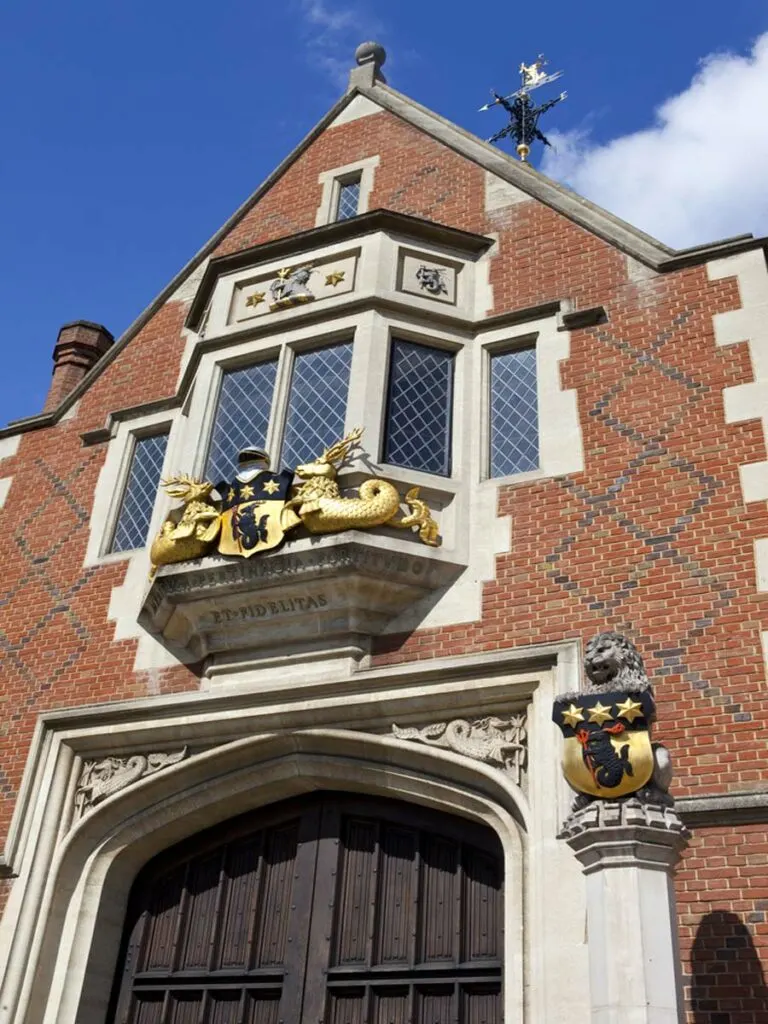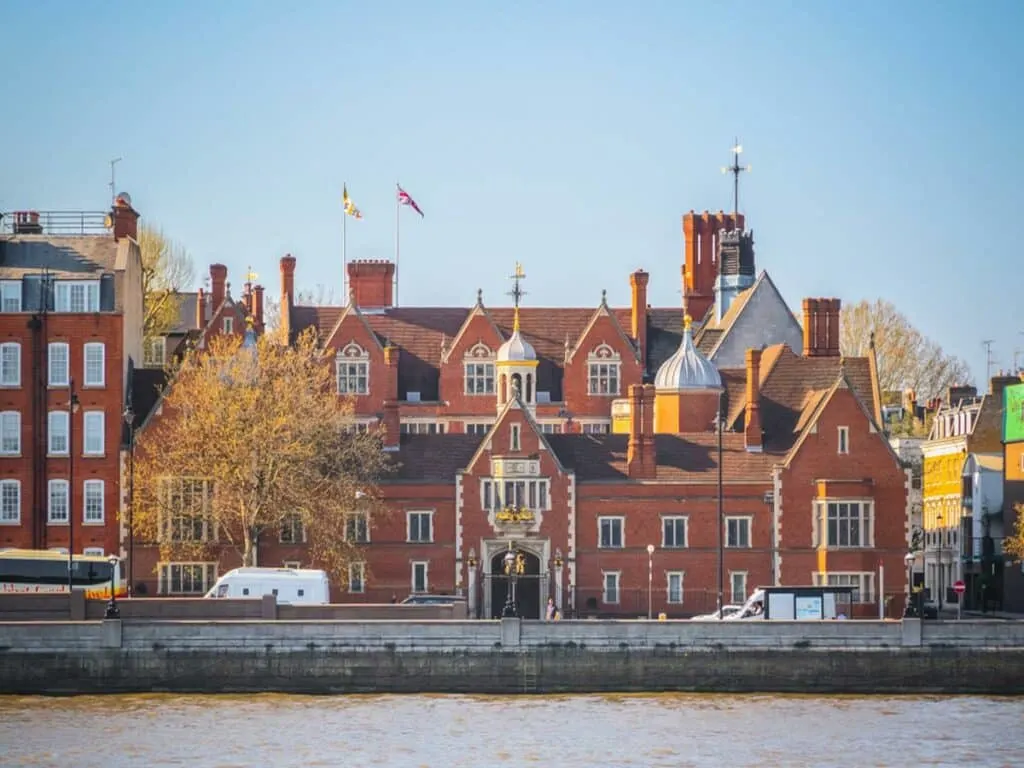From its beginnings as a stately home in Bishopsgate to a brick-by-brick move to Chelsea in the early 20th Century, Crosby Moran Hall boasts a history that other London homes can only dream of. Here’s what you need to know.
Words by John Rogers
Crosby Moran Hall is a 15th Century mansion that has a fascinating, chequered past.
Over the centuries, it’s played home to future Kings and Queens, been used as a jail and hospital, largely survived a fire, and was decimated by another.
That would be more than enough for most buildings, but Crosby Moran Hall’s history doesn’t stop there either.
It was the HQ for the East India Company, became a top London eatery, and was moved brick-by-brick five miles from its original location before playing a role as a refuge during 20th Century conflicts.
Join us on a pilgrimage to uncover the hall’s hidden secrets and discover why you really should visit Crosby Moran Hall.
Why Visit Crosby Moran Hall?

Let’s begin with the biggest and most obvious reason to visit Crosby Moran Hall… It’s a beautiful building. In fact, it’s one of the best-kept medieval buildings in the country, not just London.
The Grade II listed mansion consists of the fully-restored Grand Hall from the original site, surrounded by Neo-Tudor brick buildings designed by Walter Godfrey.
In short, it’s one of the closest things we have to a medieval masterpiece still standing in the UK today.
The Grand Restoration
Sir Christopher Moran – a philanthropist and expert in Tudor, Elizabethan and early Stuart furniture – purchased the site in 1988, paying for a complete restoration of the Grand Hall, including stabilising the original 15th-Century Reigate Stone.
In addition, Moran commissioned a new building to close the front of the site off to the street and river. This gave Crosby Moran Hall its current appearance and was part of converting the entire complex into a luxury mansion.
The beauty of Crosby Moran Hall in its current guise is that it has remained faithful to its period origins inside and out. Sir Christopher Moran used his expertise to painstakingly style the renovations to maintain the 15th and 16th Century appearance.
A Glimpse into Gardens Past
Marjorie Wyndham-Quin, the Marchioness of Salisbury, restored the gardens and used plants only found in Tudor England.
Meanwhile, the stone carvings of heraldic beasts visible throughout the site were completed by Dick Read. They represent the heraldry, not only of Moran but all of the Hall’s residents dating back to 1466. This is in line with the precedent of the time.
Medieval Authenticity
It goes without saying that Crosby Moran Hall is the real deal. Inside the hall, the Oriel Window is an incredibly beautifully restored stained glass feature window, repainted with guidance from English Heritage in its original ceiling colours.
Elsewhere throughout the mansion, Moran has displayed his extensive range of period furniture, giving the Dining Hall, Council Chamber and East Library an authentic 16th and 17th Century feel. You’ll also find paintings by the likes of Holbein, Van Dyck, Hilliard and Gheeraerts – some big names throughout the medieval period.
And, if that wasn’t cool enough, you’ll notice that Westminster Abbey strongly influences the chapel at Crosby Moran Hall. The restored fan-vaulted roof provides perfect acoustics for visiting choristers to offer a genuine 16th Century soundtrack.
Outside, Westminster Abbey’s 13th Century Cosmati pavement inspires a similar mosaic pavement in the grounds, with the same marbles used in the Abbey’s pavement in use.
All of these features add to Crosby Moran Hall’s medieval authenticity. It’s a must-visit for anyone with even a passing interest in London’s rich history, even though entry is by invitation only (more on that later).
So grab a camera and find a vantage point to photograph London’s most intriguing and beautiful medieval building.
The History of Crosby Moran Hall

Known initially as Crosby Place, the original mansion was built in Bishopsgate in 1466 on the grounds of St Helen’s Convent. Sir John Crosby, a famous wool merchant, alderman and auditor of the City of London, built the building, which was completed in 1472.
Sir John died in 1475, meaning he only enjoyed living in his elegant surroundings for a short time. Upon his death, possession was passed to his widow, Lady Anne Crosby.
A Royal Residence
The Duke of Gloucester, later King Richard III, acquired Crosby Place from Lady Anne in 1483. The future King used it as his primary London residence during the Princes in the Tower crisis.
When he first arrived at the property in May 1483, the Duke of Gloucester used the property for his council and to plot. Those familiar with Shakespeare’s first published play, Richard III, will recognise references to Crosby Place in Acts 1 and 3.
Crosby Place’s royal links continued at the dawn of the 16th Century when the future Queen, Catherine of Aragon, resided at the mansion. She had arrived in England to marry King Henry VII’s eldest son, Prince Arthur.
Arthur died five months after their marriage. Catherine’s place in English folklore was assured when she married his brother, Henry, eight years later.
Near Destruction
During the Lombard Street riots of May 1511, sheriff John Rest was the Hall’s occupant. Many rioters were remanded in custody in Crosby House before being transferred to Lambeth Palace for trial.
After Crosby Place was protected from destruction during the Dissolution of the Monasteries during Henry VIII’s reign, the wealthy alderman John Spencer, Lord Mayor of London, bought the estate. He threw lavish banquets in the Great Hall and regularly entertained dukes, ambassadors and Queen Elizabeth I.
Notable lodgers at Crosby House during this period include Sir Walter Raleigh, the famous Elizabethan explorer and a favoured courtier to Elizabeth, and Mary Sidney, the poet and Dowager Countess of Pembroke.
Prison, Religion, Trading and Eating
In the 17th Century, Crosby Place again found use as a temporary prison, housing royalist prisoners during the English Civil War. At this time, Sir John Langham, a firm supporter of Oliver Cromwell, was the house’s tenant.
After Langham deemed the house no longer fit for habitation, he divided the Great Hall. One half was given as a meeting room to a Presbyterian congregation. In contrast, the other half was given to the East India Company.
Between 1621 and 1638, Crosby Place was the headquarters for the East India Company and played host to the company’s offices.
The Great Hall was used as a storage house for the company’s increasing number of goods traded with the Far East and underwent significant levels of wear and tear.
The mansion largely survived the Great Fire of London in 1666 but was severely damaged by another fire six years later. The Great Hall survived, but large parts of the estate were demolished.
It wasn’t until almost 200 years later that Crosby Hall underwent restoration, primarily funded by Maria Hackett. In 1868, Crosby Hall became a top London restaurant. The directors, Frederick Gordon and Horatio Davies, later became the owners of Pimms.
Refuge in the 20th Century
After some time, the building was sold to the Chartered Bank of India, Australia and China, whose directors intended to pull the Great Hall down to make space for a new bank.
Following protests and campaigns that included the intervention of King Edward VII, the Great Hall was moved brick-by-brick to its current site in Chelsea.
During World War I, Crosby Hall was a refuge for Belgian refugees. After the war, the British Federation of University Women (BFUW) took a lease on the Hall, which became a leading site for leading female academics, artists and industrialists worldwide.
Before the Second World War, the BFUW awarded several fellowships to Jewish women who were able to escape Nazi-dominated Europe.
Crosby Hall was put up for sale in 1986 and purchased two years later by Sir Christopher Moran. He has overseen the restoration to its current guise as a private home, occasionally opened to visitors by invite only.
Crosby Moran Hall Practical Information
- Crosby Moran Hall is not open to the public. However, Sir Christopher Moran does invite special interest groups into the mansion by invite only. Not to worry though, you can view the exterior of the house from the street. And it’s well worth it.
- Crosby Moran Hall is located on the northern bank of the River Thames on Cheyne Walk in Chelsea.
- The nearest stations are Sloane Square on the District and Circle Lines, Imperial Wharf on the London Overground and Fulham Broadway on the District Line. The mansion is also served by the number 19 and 170 buses.
- If you want to look at one of London’s most secretive hidden gems, the map below shows the house’s exact location.
Address: Crosby Moran Hall, Cheyne Walk, London, SW3 5AZ
Opening Times: By invitation only

